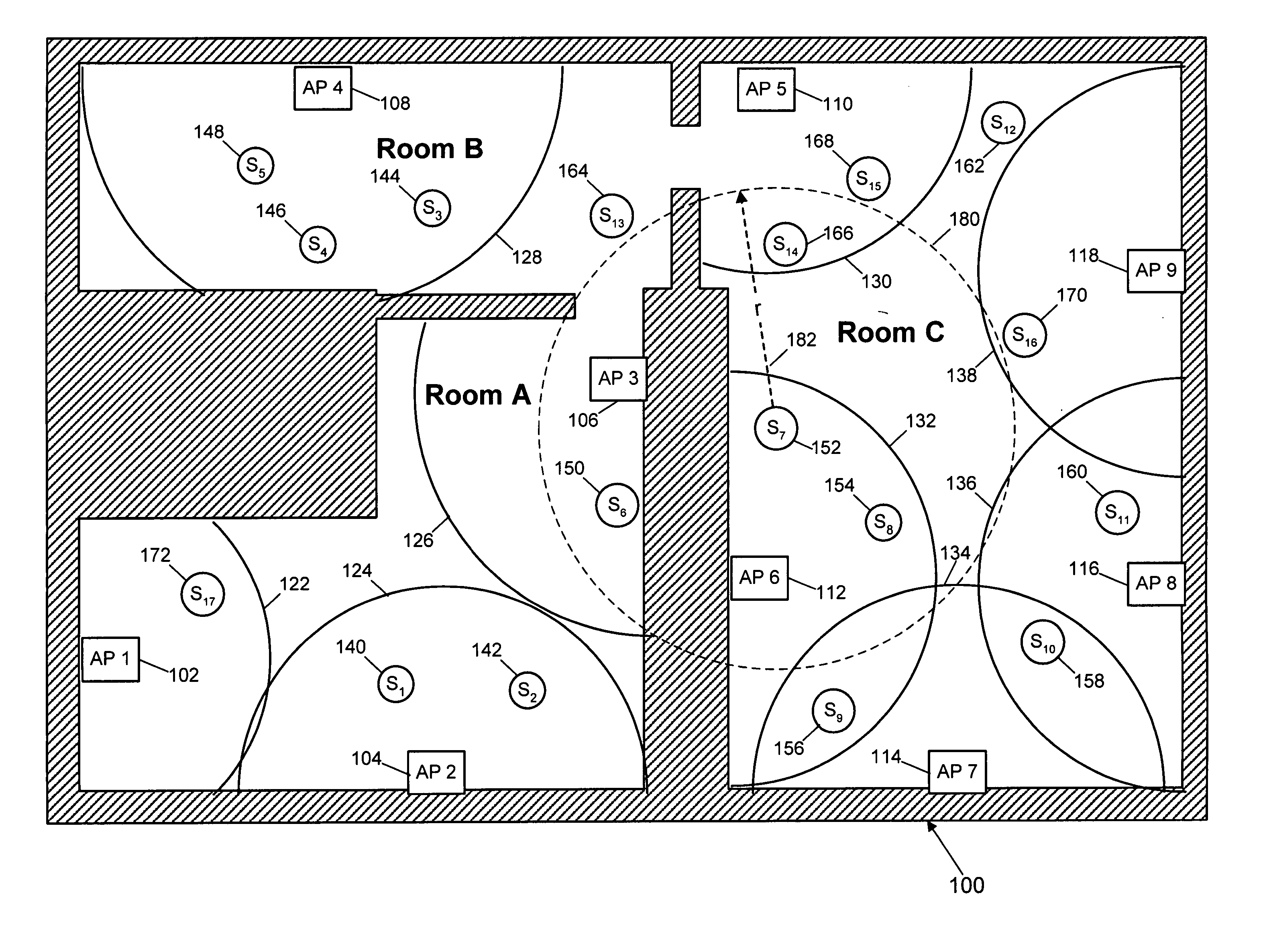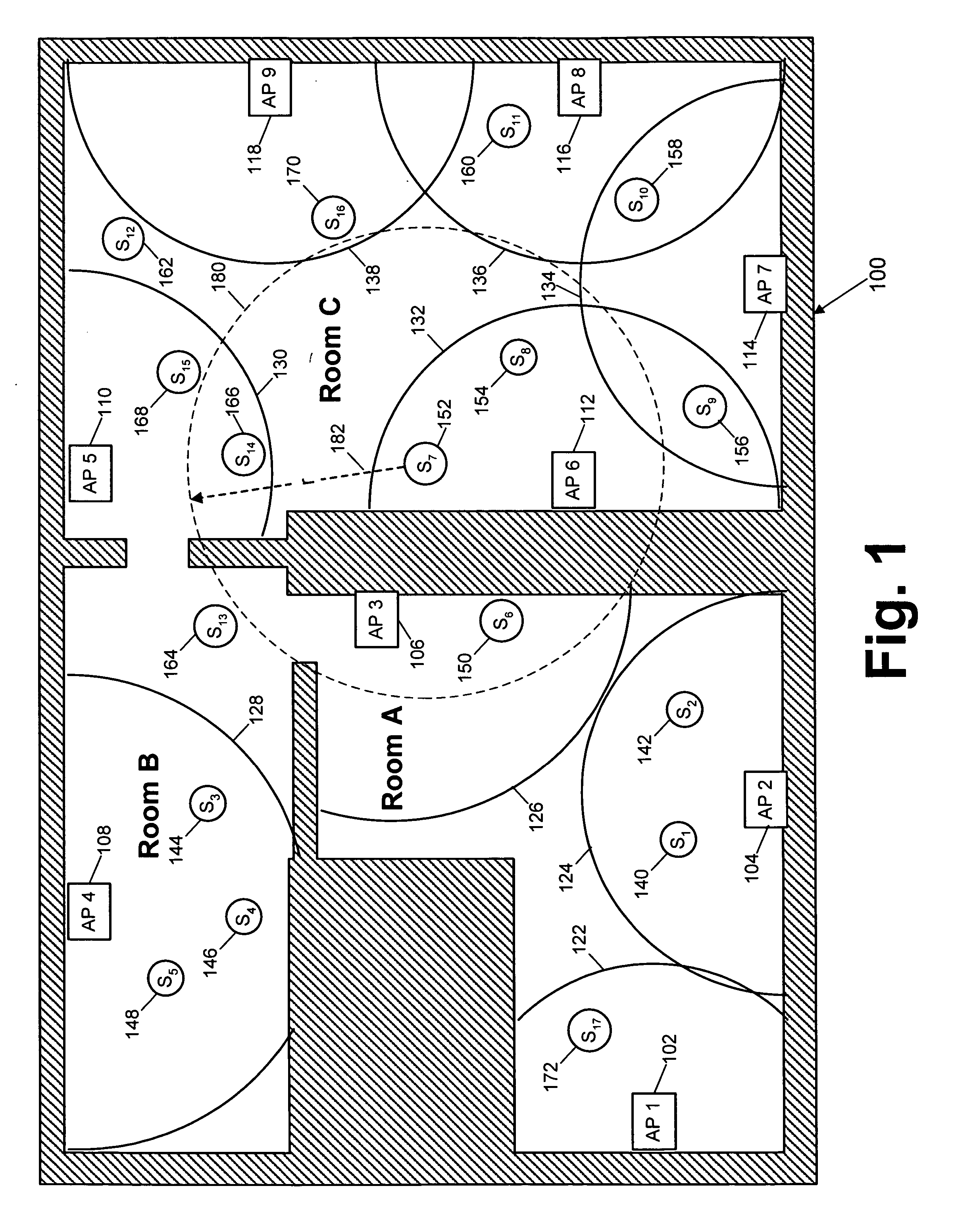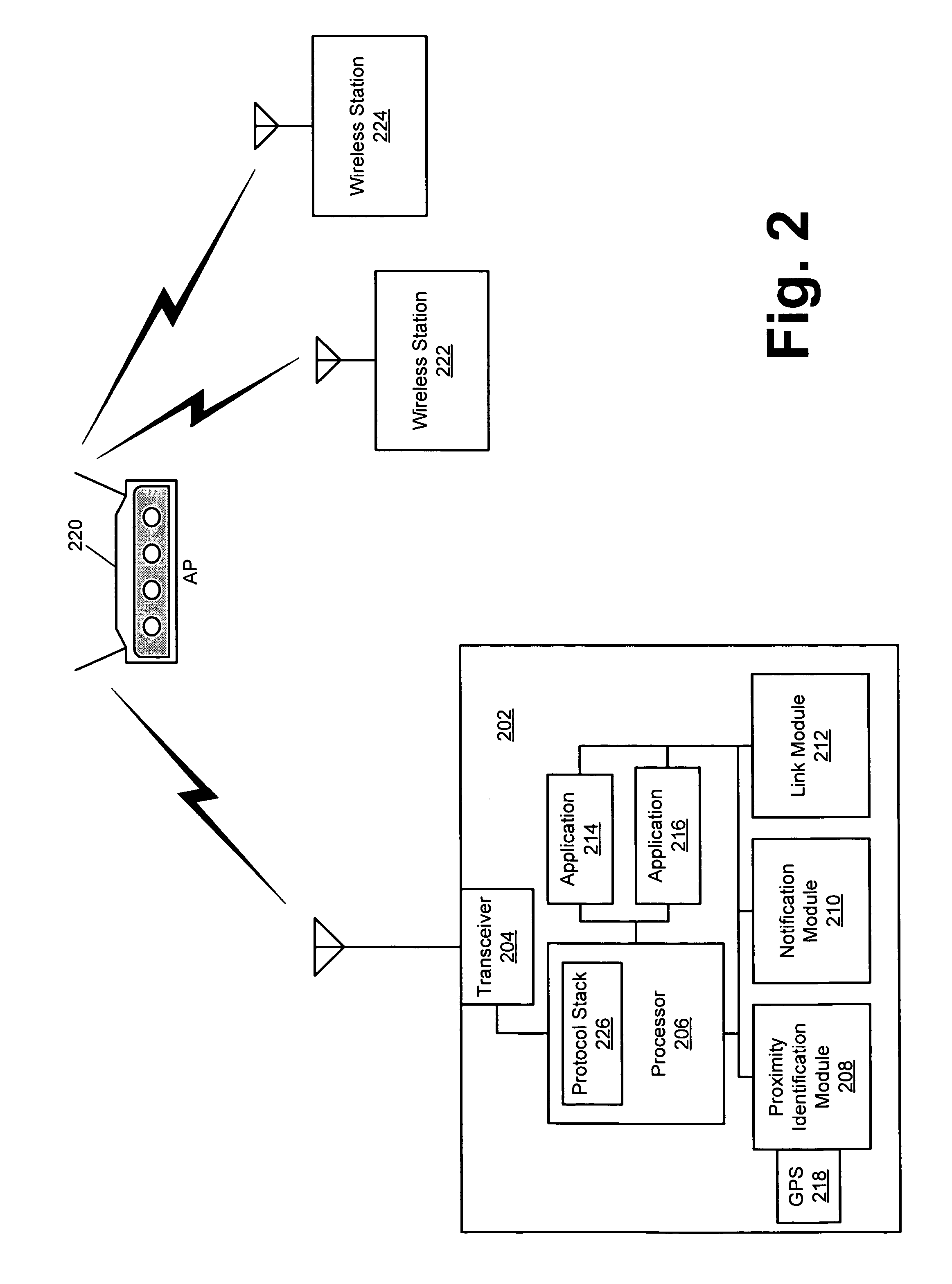Power management for wireless direct link
a direct link and wireless technology, applied in the direction of instruments, transmission systems, electrical equipment, etc., can solve the problems of inability to establish a direct link, inability to provide an adequate technique to allow peer stations, draining power from their power supply, etc., to achieve cost savings, transparent operation, and save design and resources
- Summary
- Abstract
- Description
- Claims
- Application Information
AI Technical Summary
Benefits of technology
Problems solved by technology
Method used
Image
Examples
Embodiment Construction
[0027] The following description is intended to convey a thorough understanding of the present invention by providing a number of specific embodiments and details involving the identification of, and communication with, proximate wireless stations. It is understood, however, that the present invention is not limited to these specific embodiments and details, which are exemplary only. It is further understood that one possessing ordinary skill in the art, in light of known systems and methods, would appreciate the use of the invention for its intended purposes and benefits in any number of alternative embodiments, depending upon specific design and other needs.
[0028] For ease of illustration, the various techniques of the present invention are discussed below in the context of EEE 802.11-based wireless networking. However, those skilled in the art, using the teachings provided herein, may advantageously implement the disclosed techniques in other wireless networks. Accordingly, refe...
PUM
 Login to View More
Login to View More Abstract
Description
Claims
Application Information
 Login to View More
Login to View More - R&D
- Intellectual Property
- Life Sciences
- Materials
- Tech Scout
- Unparalleled Data Quality
- Higher Quality Content
- 60% Fewer Hallucinations
Browse by: Latest US Patents, China's latest patents, Technical Efficacy Thesaurus, Application Domain, Technology Topic, Popular Technical Reports.
© 2025 PatSnap. All rights reserved.Legal|Privacy policy|Modern Slavery Act Transparency Statement|Sitemap|About US| Contact US: help@patsnap.com



